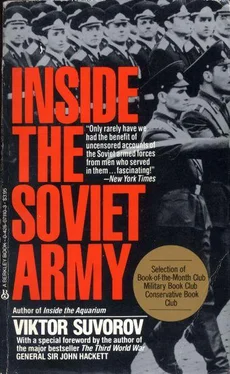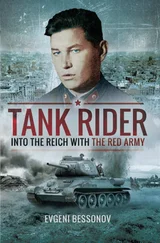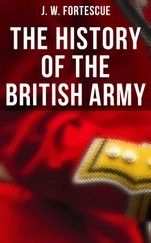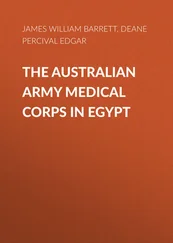The situation changed radically at the end of the 1950s.
Throughout the world, Communist land-based aggression was running into opposition from a wall of states bonded together in military blocs. At this point, the acquisition of a navy became necessary if the campaign of aggression was to continue. Expansion was continuing beyond the seas and across oceans-in Indonesia, Vietnam, Laos, Africa, Cuba and South America. In this situation, even if the Commander-in-Chief of the Navy had not wished to expand his fleets, he would have been forced to do so. Until the war, the main threat to the USSR had come from continental powers-from Germany, France and Japanese-occupied Manchuria. After the war the United States became the main enemy. Of course, anyone occupying Gorshkov's position would have received billions of additional rubles to use in the struggle against the USA. At the beginning of the 1960s it was established that a nuclear submarine provided an excellent platform for rockets. A start was made with their production. Of course, they would not be at Gorshkov's disposal but he was given the green light to develop conventional naval forces with which to protect them.
One final point. The Politburo had realised quite clearly, early on and without help from Gorshkov, that the great sea powers, Great Britain, the United States and Japan, would take the place of Germany and France as the main enemies of the Soviet Union. It was for this reason that in July 1938 the Politburo adopted a resolution `On the construction of an ocean-going fleet'. (At that time Gorshkov was only the commander of a destroyer.) In accordance with the resolution, a start was made with the building of aircraft carriers like the Krasnoye Znamya and with giant battleships like the Sovetskiy Soyuz and cruisers like the Shapayev .
Germany entered the Second World War with 57 submarines, Great Britain with 58, Japan with 56 and the United States with 99. According to its own figures, the Soviet Union had 212 when it came into the war, although American engineers, who built these submarines, estimate that it had 253. The Soviet Navy had 2,824 aircraft in 1941, the coastal artillery had 260 batteries, including some 406mm guns. All this was before Gorshkov. The war put a brake on the shipbuilding programme and after its end the building of all the large ships laid down before the war was discontinued, since they had become obsolete.
However, the Politburo understood the need for an ocean-going navy and a new shipbuilding programme, of which we can see the results today, was approved in September 1955. This programme pre-dated Gorshkov. He was simply empowered to carry out a programme which had been authorised before his time.
There is no doubt that Gorshkov is a strong-willed and purposeful admiral, but this counts for little in the USSR. No admiral would be allowed to advocate this or that step if the Politburo thought differently from him.
Finally, no matter how powerful the West may consider Gorshkov, the fact remains that the Soviet Navy ranks as fifth of the five Armed Services.
1
The Airborne Forces (ABF) do not rank as one of the Armed Services but as an arm of service. However they are an independent arm of service, and do not belong to any of the Armed Services. In peacetime they are subordinated directly to the Minister of Defence and in wartime to the Supreme Commander.
At present there are only 13 formations in the world which one can call `Airborne Divisions'. The US, West Germany, France, China and Poland each have one. The remaining 8 belong to the Soviet Union.
The airborne divisions are directed, for both administrative and operational purposes, by a Commander. His post is of unique importance. Although he commands only 8 divisions, he has the rank of General of the Army, the same as that held by the Commander-in-Chief of the Land Forces, who has 170 divisions under his command.
In peacetime, all the ABF divisions are up to their full wartime complement and staffed by the best troops. The ABF have first choice of personnel, before even the Strategic Rocket Forces and the Navy's submarine detachments.
ABF troops may operate under the control of the C-in-C of Strategic Directions, in groups of 1 to 3 divisions, or they may function independently.
If 1 to 3 divisions are to be used for an airdrop in a particular sector their operations are coordinated by an ABF corps command group, which is established temporarily for this purpose. One of the ABF Commander's deputies commands the corps. If 4 or 5 divisions are to be used, a temporary ABF Army command group is established. This may be headed by the Commander of the ABF himself, or by one of his deputies.
The entire strength of Military Transport Aviation of the Air Forces is controlled by the Commander of the ABF while an airborne assault operation is taking place.
Each-ABF division consists of:
Three parachute regiments
A reconnaissance battalion (18 armoured reconnaissance vehicles)
A battalion of self-propelled artillery (32 airborne assault guns)
An anti-tank battalion (18 85mm guns)
A howitzer battalion (18 122mm guns)
A battalion of multiple rocket launchers (18 BM 27-Ds)
An anti-aircraft battalion (32 ZSU-23–4s)
A communications battalion
A motor transport battalion
A battalion responsible for the storage and packing of supply-dropping parachutes
A chemical warfare company
An engineer company
A parachute regiment has three battalions and mortar, anti-aircraft, anti-tank, and self-propelled artillery batteries.
All the battalions in one regiment of a division are equipped with BMD-1 armoured personnel carriers. Two other regiments have one battalion each of BMD-1s and two of light motor vehicles. Thus, of the nine parachute battalions in a division, five have armoured vehicles of great manoeuvrability and considerable fire-power, the remaining four have light vehicles. In all, a parachute division has 180 armoured personnel carriers, 62 self-propelled guns, 18 multiple rocket launchers, 36 field guns, 45 mortars, 54 anti-aircraft guns, more than 200 anti-aircraft rocket launchers and more than 300 anti-tank rocket launchers. The division is fully motorised, with more than 1,500 vehicles. Its average peacetime complement is 7,200.
3
There has been discussion for some considerable time, in both the Soviet General Staff and the Central Committee, of the question of transforming the ABF into a sixth, independent Armed Service.
It is envisaged that such a Service would have four or five parachute divisions, a large contingent of transport aircraft, several newly-established divisions of marine infantry, units of landing ships and several aircraft carriers with fixed-wing aircraft and helicopters.
Experience has shown that the USSR has not enough forces equipped and trained for armed intervention in a territory which is separated from it by an ocean and that it is unprepared for such an undertaking. There are many examples-Cuba, Indonesia, South Africa, Chile, Central America. A new Armed Service of the sort described would enable the Soviet Union to intervene effectively in such areas.
As its internal crises become more acute, the aggressiveness of the Soviet Union increases. For this reason it appears probable that the sixth Armed Service will be created in the next few years.
Military Intelligence and its Resources
1
Soviet Military Intelligence is neither an Armed Service nor an Arm of Service. It has no uniform or identifying badge or emblem. Nor are these needed. Intelligence is a logistical support service, like the services concerned with nuclear warheads or camouflage or disinformation.
Читать дальше












